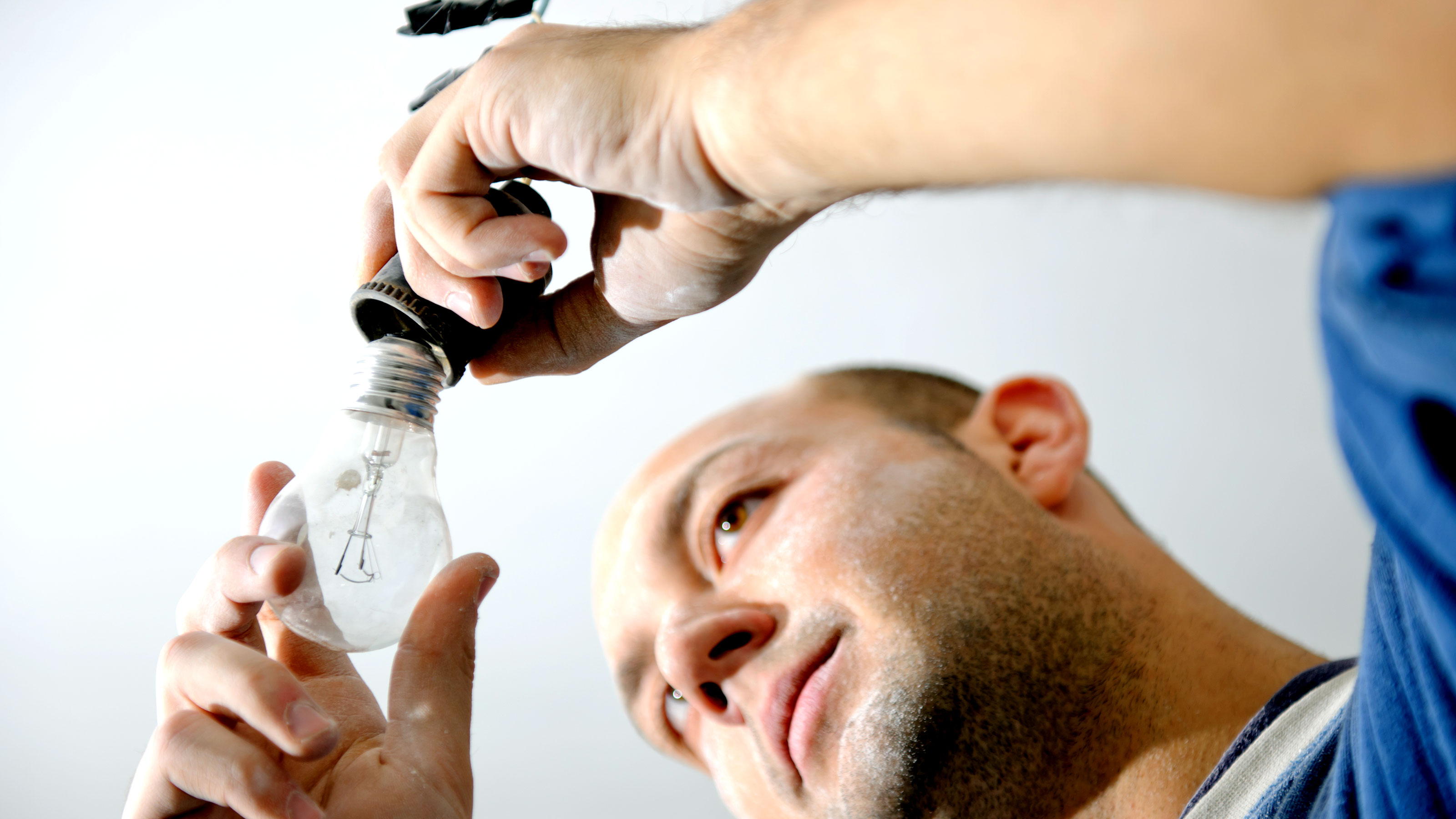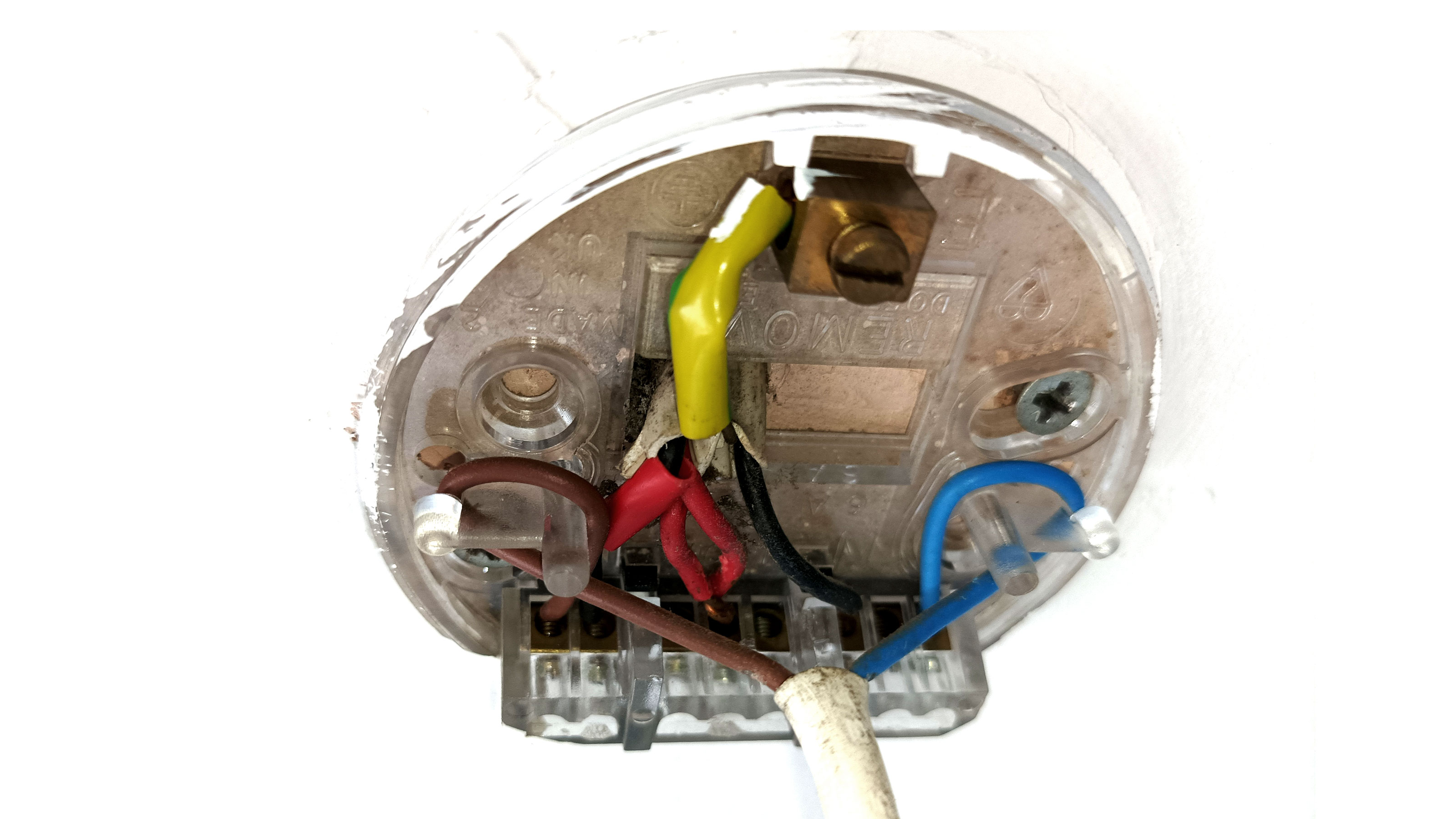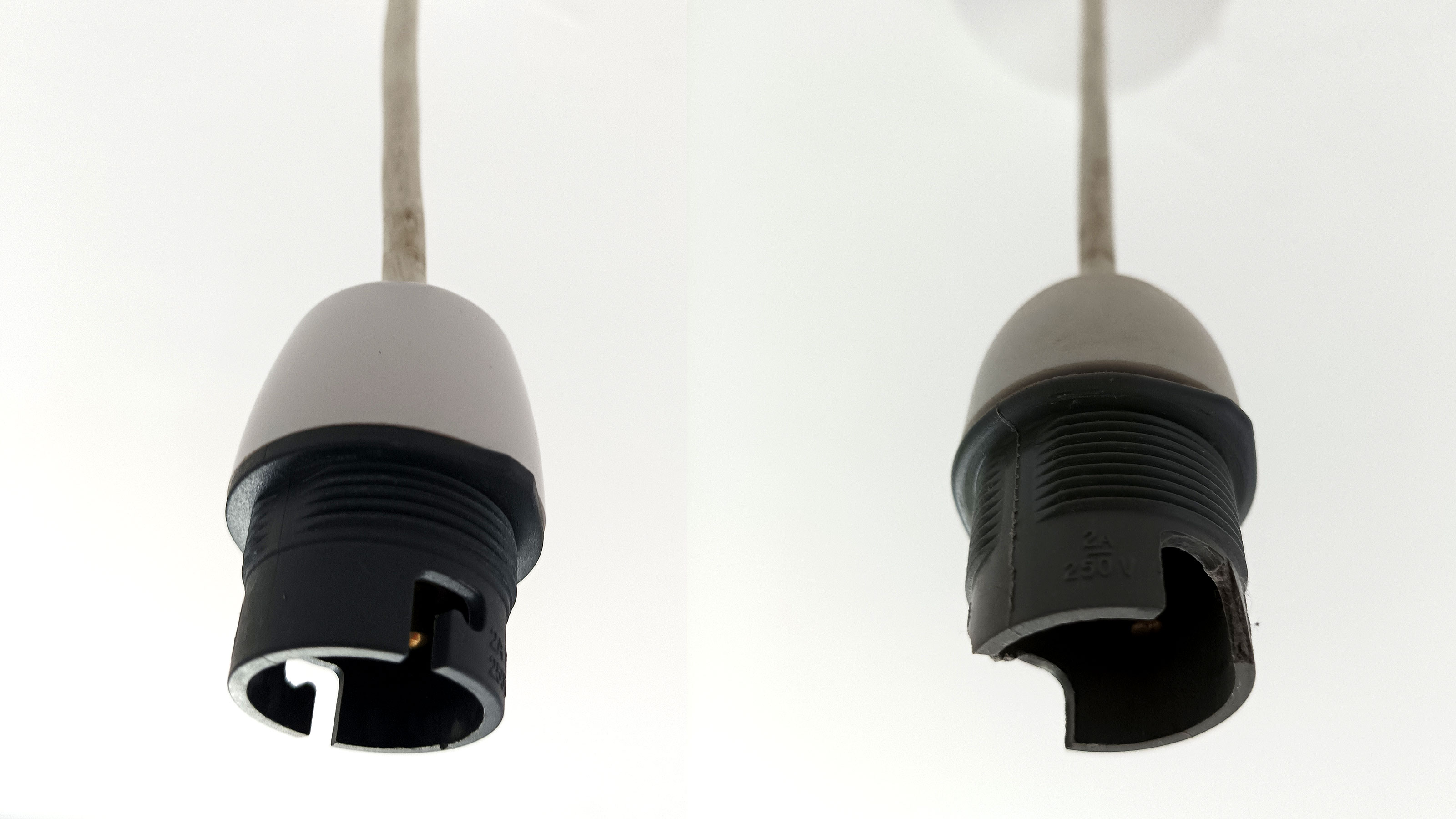How to change a light fitting: Installing a new rose or holder
Knowing how to change a light fitting means you can get the job done straight away. Here we tell you how to fit a new ceiling pendant and lamp holder

Knowing how to change a light fitting can be a handy skill when renovating your home or redecorating.
And day-to-day it might become necessary if you've tried changing the bulb, only to find the fault lies with the fitting itself. The wiring might've come loose in the rose or the lamp holder or it might just be time to replace the light fitting entirely.
If you are rewiring, changing a light fitting might come into that and if you're a competent DIYer, it's a job you could potentially take on yourself. But if there is any doubt when it comes to electrics you need to call in an electrician.
Here we show how to change a light fitting safely including the whole pendant or just the lamp holder.
How to change a light fitting: Replacing a pendant
If your pendant is worn or covered in paint it’s time to replace with a fresh new fitting
1. Make sure that the electricity supply is isolated
Go to your fuse board and switch off the relevant circuit breaker. If you are unsure, which this is, then turn off everything. Obviously, make sure you can see what you are doing still. Often it's a good idea to do these kind of jobs during daylight hours.
"Don't take a relaxed approach to electricity, even for small jobs. I know someone who ended up with a bleed on the brain because they asked someone else to isolate the circuit and that person got distracted on their phone and flicked the wrong switch. The guy then got an electric shock, causing him to fall off his step ladder and crack his head. Always take this part of the job, seriously," warns electrician Jonathan Bacon.
2. Remove the pendant cover
Get up a step ladder – and with an insulated screwdriver, unscrew the rose to give access to the connections. Take a photo as a reference to where each of the cables go, in particular any cables that have red or brown sleeving or tape on them as this will be the switch wire (live). Now undo the wires and remove the pendant. There should be a couple of screws holding the rose to the ceiling.
"A common mistake that is often made is when people put all the red or brown (live) wires together and all the black or blue (neutral) wires together when in fact one of the black or blue wires is the switch live," says Jonathan Bacon. "The end result is this will cause a short circuit and the breaker will disconnect."
3. Add your new pendant
Feed the wiring through the rose of the new pendant and screw the rose into the ceiling. If you have junction box wiring you will only have one cable that will have an earth (yellow and green), blue (neutral) and brown (live) or older wiring will be earth (yellow and green) black (neutral) and red (live). The pendant cable will typically have blue and brown wires already attached. One to the left and one to the right.
Now match up the blue wire with the neutral wire and screw in next to it. Repeat the same process with the live switch wire (this will normally be the one marked with red or brown sleeving or tape). Now attach the earth wire to the earth connector and screw in tightly. Finish up by screwing the rose cover back into place to hide the wiring. Refer back to your photograph if you get into any difficulty.
4. 3 Plate System (loop in)
The 3 plate wiring system is commonly used on ceiling roses and pendants. You will find a separate connection terminal usually in the centre of the rose, which is used as a joint for the live (brown or red cables) that loop from the previous light fitting to the next light fitting.
Once complete turn the electricity on and make sure that your new pendant works.

Jonathan is a professional electrician who has worked within the electrical contracting industry for 26 years, focusing on commercial fire alarm systems

How to replace the lamp holder
If your lamp holder has broken and don’t want to replace the whole pendant you can just purchase a lamp holder for a few quid.
1. Make sure that the electricity supply is isolated
Turn off the relevant circuit breaker switch on your fuse board. Again, if you are unsure which this is, then turn off everything.
2. Remove the old lamp holder
Unscrew the top and bottom parts of the lamp holder to expose the wiring in the top of the holder.
3. Disconnect wiring
There will be two wires, one blue (neutral) and one brown (live). Get a suitable screwdriver – an insulated screwdriver is a good choice for electrics – and undo the holding screw and remove the remaining parts of the lamp holder.
4. Install new lamp holder
Now slide the top half of the lamp holder over the cable and then wire up the neutral and live wires. Take note of how the old wires were held in place and repeat for the new. Make sure that there are no loose strands on the wires and screw tightly in place.
5. Put the lamp holder together
Screw the top half of the lamp holder into place making sure not to pinch the wires. Place your lamp shade over the holder and screw the bottom half of the lamp holder into place. Finally, fit your bulb and switch the electricity supply back on.

Can I change my own light fittings?
If you have some decent DIY knowledge, especially with electricals, i.e changing an electrical socket – then changing a light fitting should not be too much of a challenge. Just make sure the electricity supply is isolated or switched off and you have an insulated screwdriver before you start. One tip is to take a pic of the wiring on the light fitting for future reference if needed.
If in any doubt at all about changing a light fitting, it is best to call in a professional electrician to do the job.
Do I need to turn off the power to change a light fitting?
It is essential to switch off the electricity when changing a light fitting, anyone who understands the basics of electrics should know this. Someone could easily try the switch without realising you are working on the light fitting.
Or someone could accidentally lean on the switch. More importantly 3 plate systems remain live at the ceiling rose even when the switch is turned off.
In older houses the writing might not be up to standard and could go live while you are working on it. So to be on the safe side, always switch off the electricity supply.
How much do electricians charge to change a light fitting?
Electricians charge anything between £30-£60 an hour depending on factors such as how well qualified they are, the size of their company and where you are located in the country. For example, London-based companies are typically more expensive.
Installing a light fitting should take around an hour so expect to pay £30+, again dependent on the electrician and location. Obviously, if you need more than a single light fitting installed the price will go up with each fitting. Also you will need to factor in the cost of the fitting if you haven’t purchased one yourself.
If you have flickering lights after you have changed a light fitting you can go back and check connections (making sure you switch off the electricity again before doing so) but if this doesn't solve the issue, this would be a good time to call out a professional.
Get the Homebuilding & Renovating Newsletter
Bring your dream home to life with expert advice, how to guides and design inspiration. Sign up for our newsletter and get two free tickets to a Homebuilding & Renovating Show near you.
Steve Jenkins is a freelance content creator with over two decades of experience working in digital and print and was previously the DIY content editor for Homebuilding & Renovating.
He is a keen DIYer with over 20 years of experience in transforming and renovating the many homes he has lived in. He specialises in painting and decorating, but has a wide range of skills gleaned from working in the building trade for around 10 years and spending time at night school learning how to plaster and plumb.
He has fitted kitchens, tiled bathrooms and kitchens, laid many floors, built partition walls, plastered walls, plumbed in bathrooms, worked on loft conversions and much more. And when he's not sure how to tackle a DIY project he has a wide network of friends – including plumbers, gas engineers, tilers, carpenters, painters and decorators, electricians and builders – in the trade to call upon.

